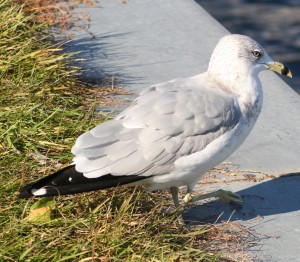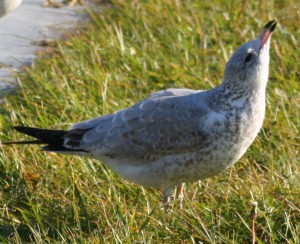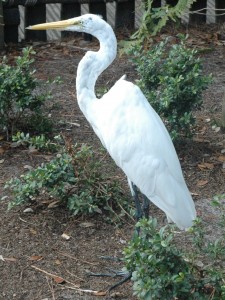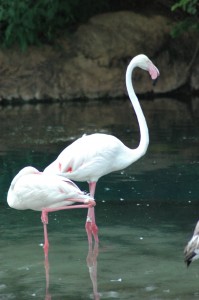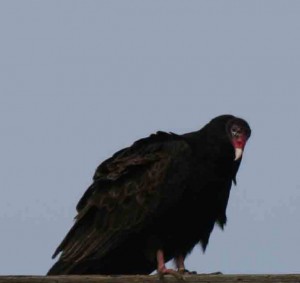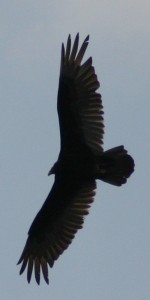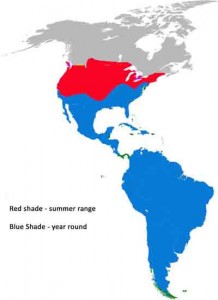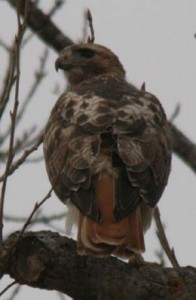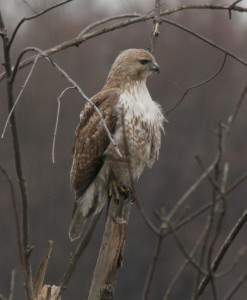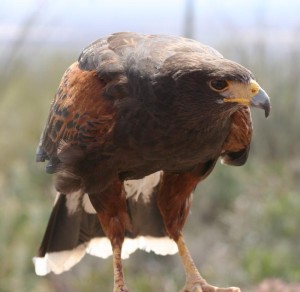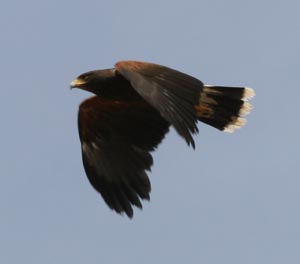Ring-billed Gull – Larus delawarensis
General:Ring-Billed Gulls are flocking birds. They can readily be seen along rivers, lakes, farm land and unfortunately fast food restaurants. There is an island on Lake Ontario that can hold as many as 85,000 pairs during breeding season. (1)
Although it is considered a typical large white-headed gull, the Ring-billed Gull has been known to hybridize only with smaller, black-headed species, such as Franklin’s, Black-headed, and Laughing gulls. (2)
Many, if not most, Ring-billed Gulls return to breed at the colony where they hatched. Once they have bred, they are likely to return to the same breeding spot each year, often nesting within a few meters of the last year’s nest site. Many individuals return to the same wintering sites each winter too. (2)
In the late 19th century, this bird was hunted for its plumage. Its population has since rebounded and it is probably the most common gull in North America. In some areas, it is displacing less aggressive birds such as the Common Tern. (3)
As mentioned, these birds nest in colonies. A nest is made from a scrape in the ground and filled with twigs and sticks. The female lays 1–4 buff/olive eggs with dark brown speckles. Both the male and the female incubate the eggs. Incubation is about 28 days. The chicks are hatched covered in down. They fledge in about 30 days.
Identification: The Ring-billed Gull is a medium sized gull that is approximately 16”–21” long with a wingspan of between 41”*46”. They weigh between 10 – 25 oz. ( ¾ – 1 ½ lbs.). It has a short, bright yellow bill with a black ring at the tip. Wingtips black with white spots. It has white head, neck, chest and under-parts and a soft gray back and upper wings and the legs are yellow. Young birds are mottled brown with blackish tail band and flesh colored legs.
Habitat: Found around fresh water, landfills, golf courses, farm fields, shopping areas, and coastal beaches and water ways.
Territory: Depending on time of year, these birds can be found on either coast, on inland water ways from Alaska to Labrador into the Great Lakes, south to the Gulf of Mexico.
Migration: For spring and breeding season Ring-Billed Gulls migrate north to Alaska to Labrador down to New England into the Great Lakes. They are migratory and most move south to the Gulf of Mexico and the Atlantic and Pacific coasts of North America, the Great Lakes and Cuba.
Food: Ring-Billed Gull is an omnivore that eats insects, seeds, grain, fish, mollusks, rodents and garbage. These birds are opportunistic and have adapted well to taking food discarded or even left unattended by people.
(1) Audubon Society Field Guide to North American Birds.
(3) Wikipedia
